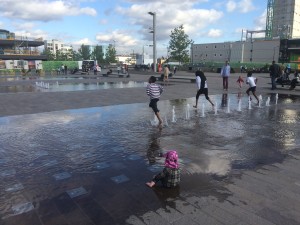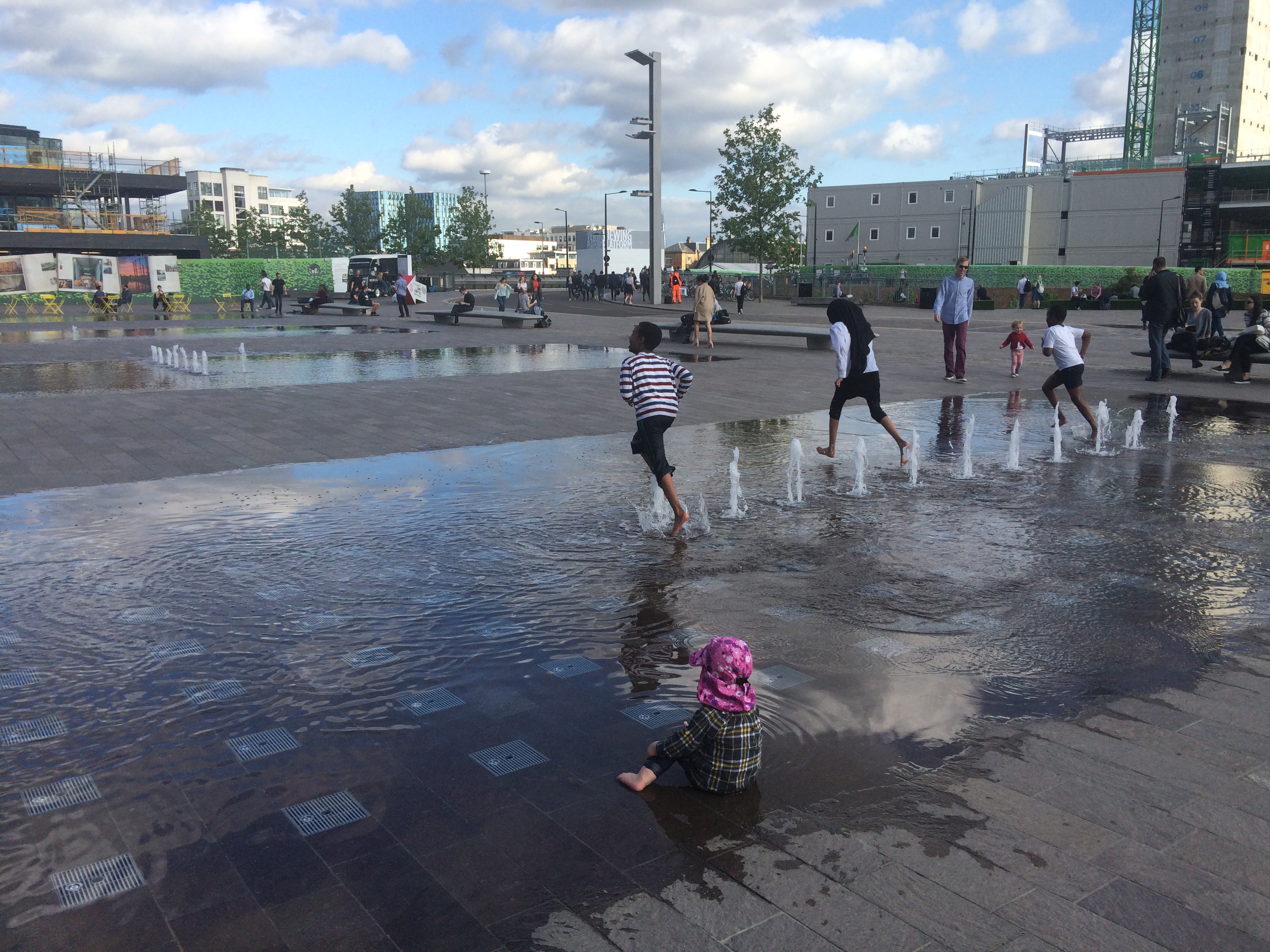The King’s Cross Central regeneration project is one of the largest in London and Europe at 67 acres.(1) This exciting development is opening up a part of the city which may be well known to locals but, until recently, was largely hidden to the millions of people who pass through King’s Cross and St Pancras stations weekly. With new homes, jobs, restaurants and public spaces, this development offers multiple ways of improving health and wellbeing in the local community.

People living around this formerly industrial urban site have significant levels of deprivation in relation to health, crime, unemployment, housing and environmental conditions.(2) Working in partnership with Islington, Camden Council’s vision for the site is to be ‘stronger, healthier, safer, more economically successful and very sustainable, with excellent services.’(3) Elements of healthy communities came across strongly in the consultation with the local community asking for ‘cleaner, safer streets, jobs, homes including those that are affordable, green spaces, shopping, community, leisure and better healthcare and leisure facilities again including those that are affordable.’(3)
The King’s Cross Opportunity Area Planning and Development Brief sets out a clear vision for tackling health inequalities and regenerating the area to provide health and wellbeing benefits for new residents and visitors. The Brief explains how the council expects the project to address health and minimise impacts throughout the design and construction process. For example, this aim has resulted in the £2m purpose-built Construction Skills Centre which provides training, apprenticeships and employment advice for jobs in the construction sector.(4)
The design vision is for a high-density mixed-use sustainable development with access to amenities and high quality open space. This has very clearly been realised in the phases which have been completed to date. The Brief emphasises the following requirements (which are clearly visible in the result):
- connectivity within and beyond the site
- streets designed for people
- mixed uses and active frontages
- integration of uses across the site (particularly in the area the Area and the Triangle)
- cultural and leisure activities which promote and respond to local culture, youth, sports, media and art
- open space and public realm (in various forms) which integrates multiple activities and ages
- environmental sustainability
- affordable housing
- high quality design throughout
- integrated transport
- appropriate provision of facilities and services (crèche, schools, play areas, community meeting spaces, and healthcare facilities)
The King’s Cross Central site construction continues, but early phases demonstrate that these principles have been carried through the design and construction, resulting in a place that is certain to benefit local communities and visitors.
References
- King’s Cross Central Limited Partnership. About the redevelopment of King’s Cross. King’s Cross. Available from: https://www.kingscross.co.uk/development
- King’s Cross Community Projects. 2010 Index of Deprivation: The area within half a mile of King’s Cross Station. Available from: http://www.kccp.org.uk/wp-content/uploads/2011/04/Index-of-deprivation-KX-analysis.pdf
- King’s Cross Opportunity Area Planning and Development Brief. London Borough of Camden, London Borough of Islington; 2004.
- Urban Land Institute. King’s Cross Case Study [Internet]. 2014. Available from: http://casestudies.uli.org/kings-cross/


NCVO’s role in the alliance will have a particular focus on volunteering in health and care. Volunteering is a key enabler for engaging people and communities in looking after their own health and wellbeing, and has value as an activity which can have a positive impact on wellbeing. An estimated three million volunteers are already involved across health and care making a significant contribution to supporting and delivering health and care services and enhancing the experience of those who use them.